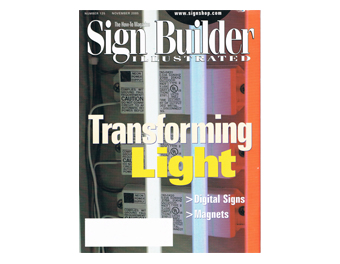 What have been the most significant lighting innovations since Sign Builder Illustrated launched twenty-five years ago?
What have been the most significant lighting innovations since Sign Builder Illustrated launched twenty-five years ago?
For a technical perspective, Janie McClanahan at Scott Fetzer Electrical Group, compiled this list:
Neon. The advent of secondary ground fault protection and the UL 2161 standard (requiring transformer manufactures to develop new power supplies and re-educate those building and servicing signage).
“The introduction of self-adjusting ‘service’ transformers covering several voltage ranges meant service companies could replace eight transformer voltages with just two models,” she says. “And development of electronic transformers for channel letters provided smaller, lighter options to replace magnetic counterparts.”
Fluorescent. Development of T8 Long Life lamps, introduction of electronic ballast for fluorescent signs, and the use of rare earth phosphors in lamps delivered brighter signs while reducing energy consumption.
“Electronic ballasts now power as many lamps with about one-third the power requirements,” she says. “Manufacture of multi-bolt ballasts (120/277) reduced inventory SKUs for the distributor and sign manufacturer, and prevented primary wiring installation errors where the primary voltage differed from the information provided to the sign builder.
 “During this period, wiring of most electronic ballasts transitioned from series wiring to parallel wiring of the lamps. With parallel wired cabinets, when one lamp fails the remaining lamps stay lit so the sign does not entirely go out.”
“During this period, wiring of most electronic ballasts transitioned from series wiring to parallel wiring of the lamps. With parallel wired cabinets, when one lamp fails the remaining lamps stay lit so the sign does not entirely go out.”
Title 24 and the new UL Electric Sign Energy Certification. These advances have all benefitted the sign industry.
“These signs require product and sign manufacturers to be more energy conscious in all installations,” says McClanahan.
—Mike Antoniak











